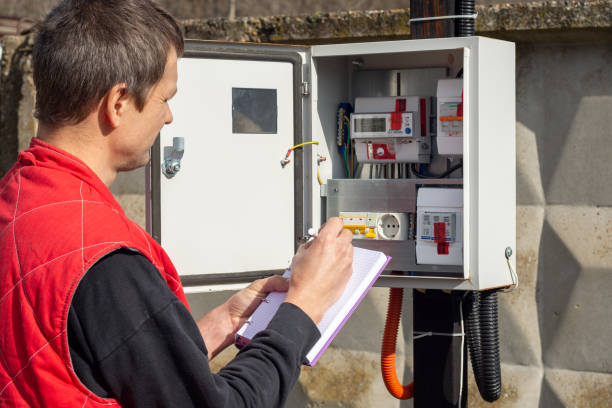In a workplace where technology is king, keeping a dependable power source is crucial. Power disruptions can result in significant operational delays, data losses, and financial damages. To counter such challenges, businesses rely on Automatic Transfer Switches (ATS) to provide an uninterrupted power supply. These devices ensure seamless transitions between power sources, enabling continuity during outages or voltage fluctuations.
What is an Automatic Transfer Switch (ATS)?
An Automatic Transfer Switch (ATS) is an intelligent device that automatically switches a load from its primary power source to a backup source, such as a generator, during a power failure. Once the main power is restored, the ATS seamlessly reconnects the load to the primary source. This ensures uninterrupted power, safeguarding critical systems without the need for manual intervention.
How Does an ATS Ensure Seamless Power Supply?
1. Automatic Monitoring and Switching
An ATS continuously monitors the voltage and frequency of the main power source. In the event of irregularities such as voltage dips or frequency deviations, it promptly switches the load to the backup source. This quick response ensures a seamless power supply and minimizes downtime.
2. Protecting Equipment from Damage
Power surges and fluctuations can damage sensitive equipment. By managing transitions between power sources, ATS devices provide stability, reducing the risk of hardware failure and ensuring business continuity.
3. Preventing Operational Disruptions
Whether it’s a manufacturing plant, hospital, or data center, operational downtime can have severe consequences. An ATS mitigates these risks by ensuring critical equipment remains powered during outages.
Applications of Automatic Transfer Switches
ATS devices are used across a variety of industries, including:
- Data Centers: Preventing server downtime and protecting data integrity.
- Healthcare: Ensuring life-saving equipment functions during power failures.
- Industrial Facilities: Avoid production losses by maintaining power for essential machinery.
- Commercial Buildings: Keeping lighting, elevators, and security systems operational.
Types of Automatic Transfer Switches
There are different types of ATS devices, each designed to suit specific needs:
1. Open Transition ATS
This type disconnects from the primary source before connecting to the backup, resulting in a brief power interruption.
2. Closed Transition ATS
This type allows both power sources to overlap momentarily, ensuring a seamless power transition without any interruption.
3. Static Transfer Switch (STS)
Designed for critical systems, an STS uses solid-state components to achieve ultra-fast switching between power sources.
Advantages of Using an ATS
1. Enhanced Reliability
An ATS ensures backup power is available instantly during outages, providing peace of mind for businesses.
2. Reduced Downtime
Quick and automatic switching prevents costly disruptions, allowing businesses to remain operational even during power failures.
3. Improved Safety
By managing transitions smoothly, ATS devices reduce the risk of electrical hazards.
Key Considerations for ATS Implementation
To get the most out of your ATS, keep the following factors in mind:
- Load Capacity: Choose an ATS that can handle your critical loads effectively.
- System Compatibility: Ensure the ATS is compatible with both your primary and backup power sources.
- Routine Maintenance: Schedule regular inspections and tests to guarantee optimal performance during emergencies.
Why Invest in Automatic Transfer Switches?
For businesses and industries reliant on uninterrupted power, an ATS is more than a convenience—it’s a necessity. It ensures critical operations can continue seamlessly during power outages, protecting equipment, data, and productivity.
Conclusion
An Automatic Transfer Switch (ATS) is an essential component of any robust power management system. By ensuring a seamless power supply, it helps organizations maintain operational efficiency and prevent costly disruptions. Investing in a reliable ATS not only safeguards critical systems but also provides long-term benefits by enhancing resilience and reliability in power management.


